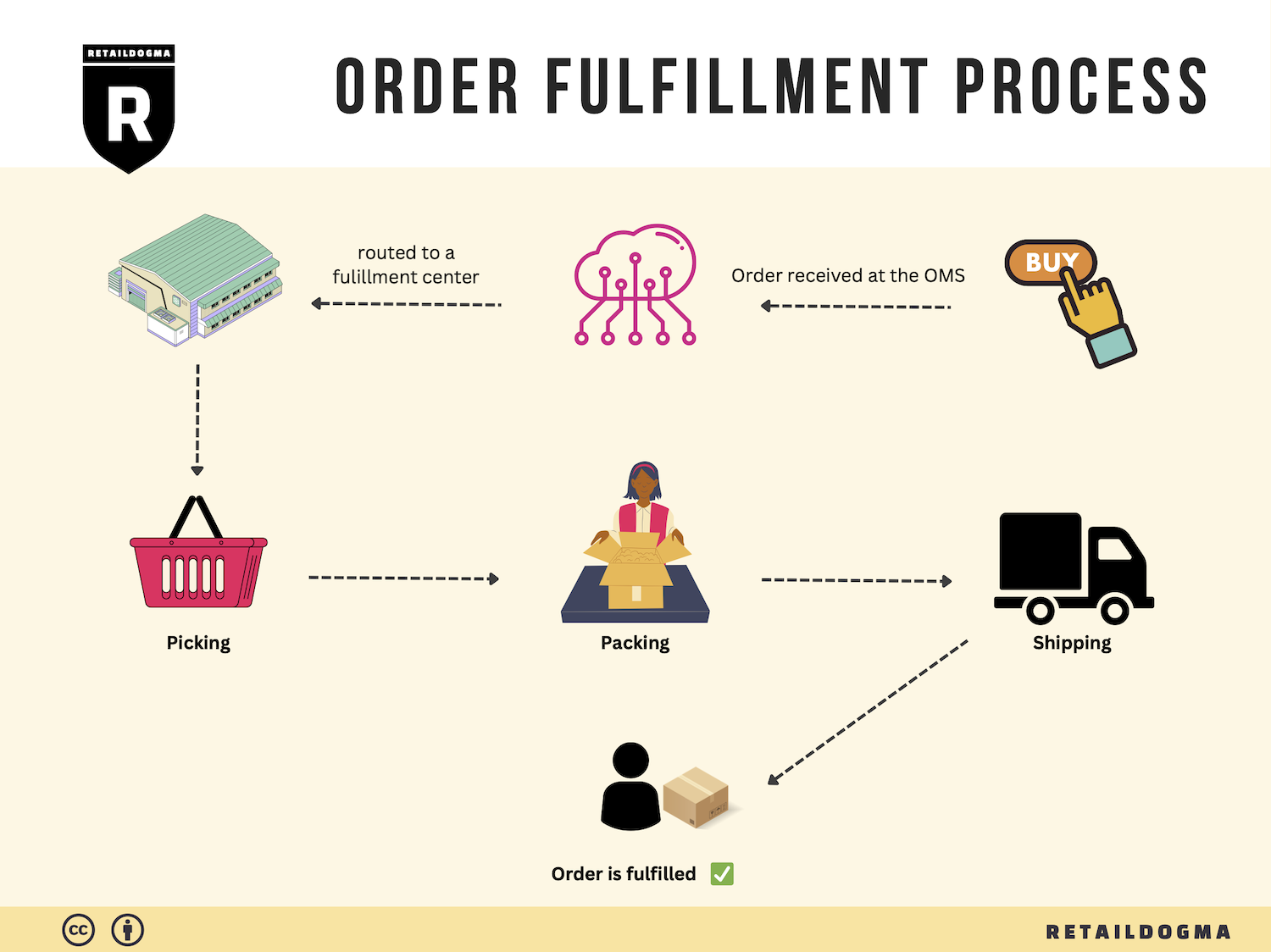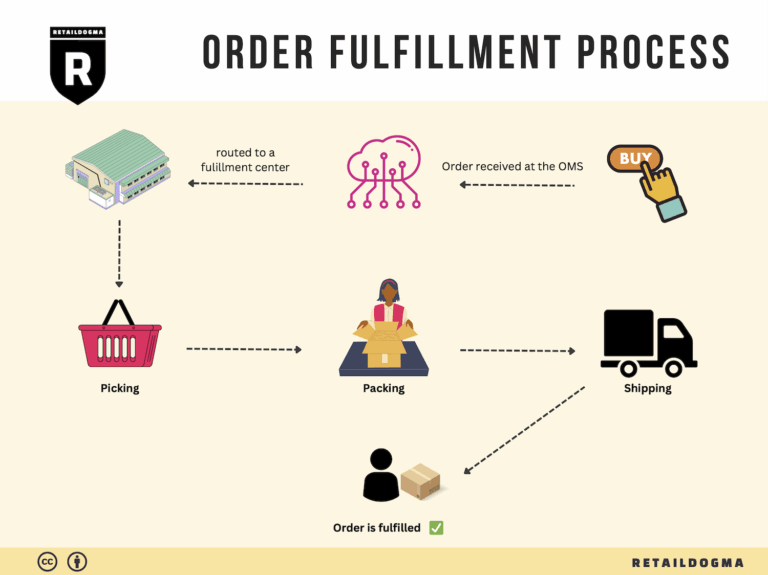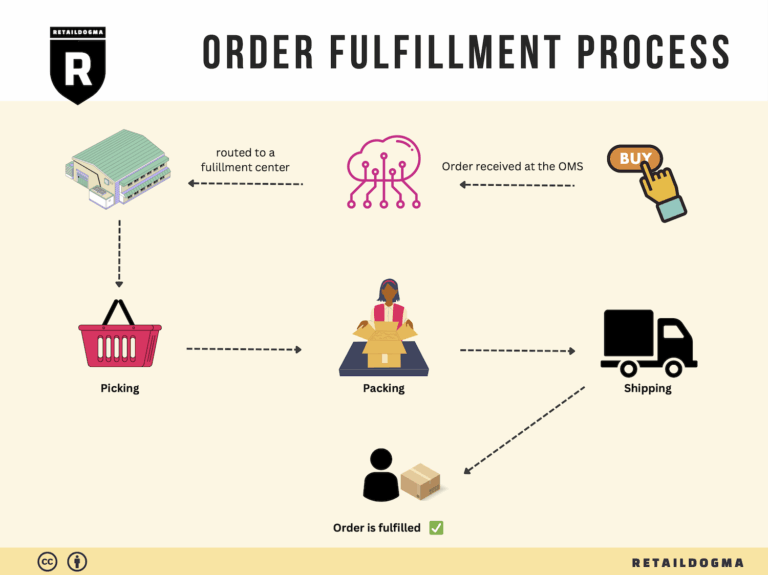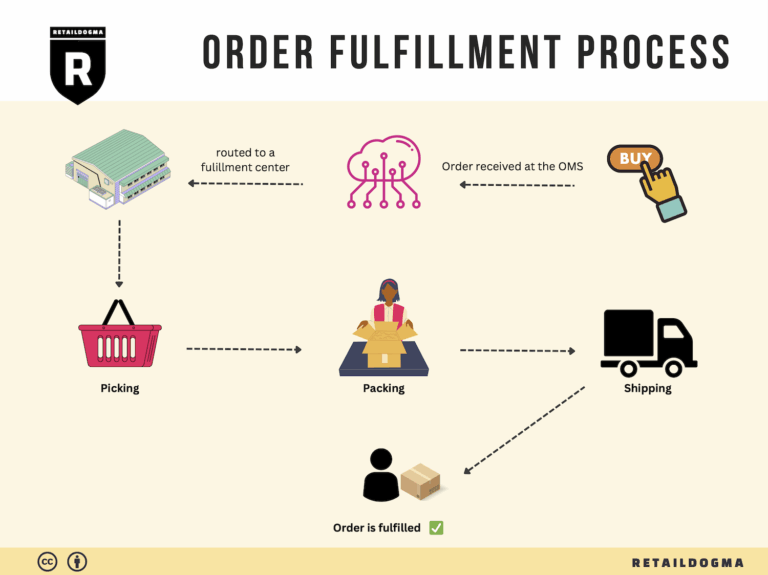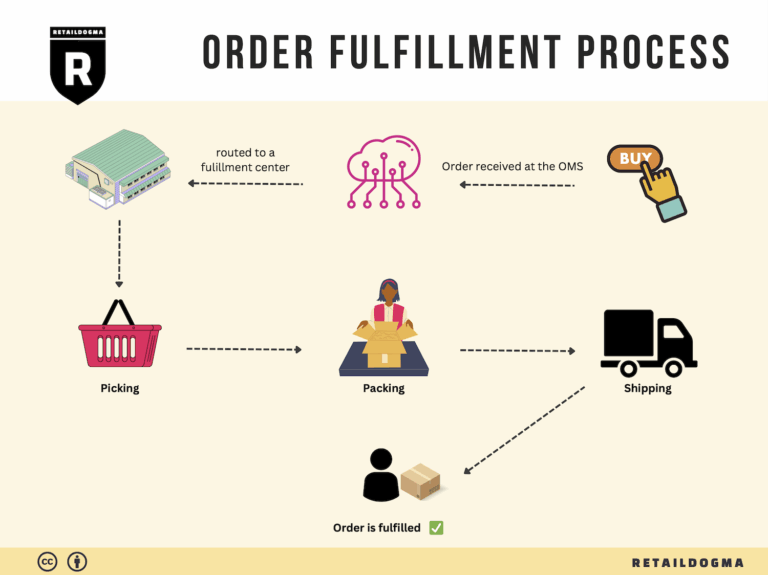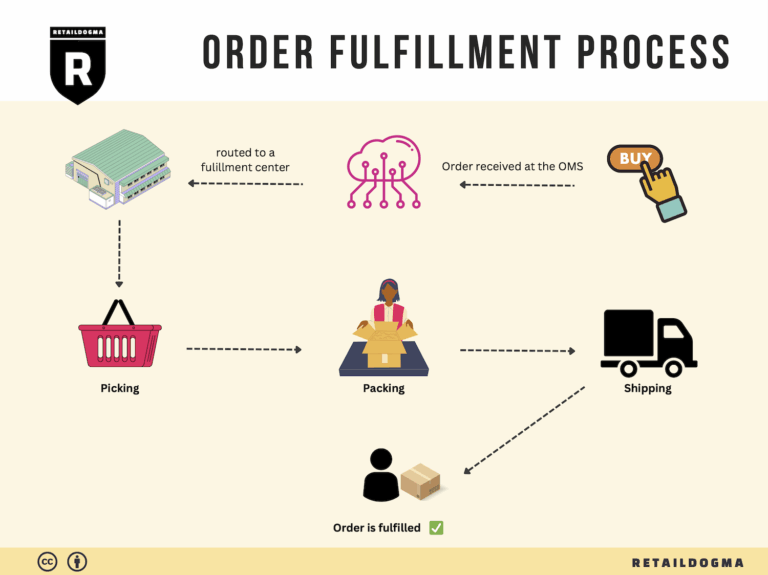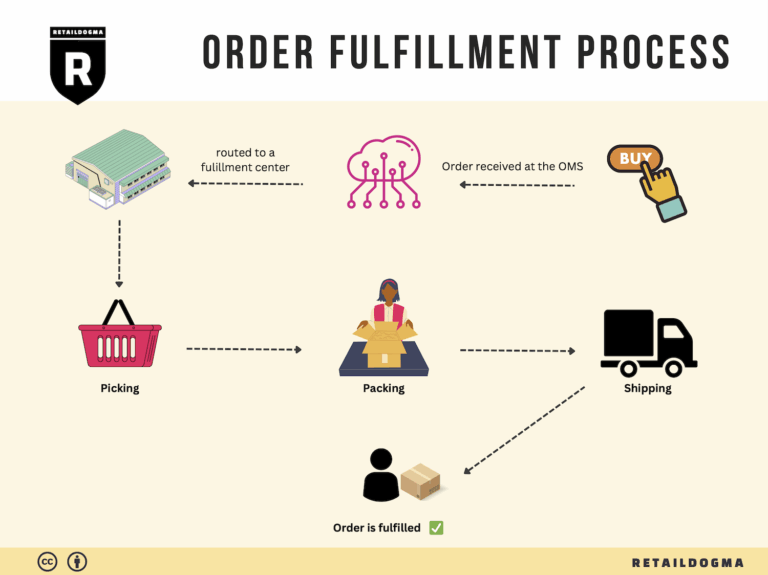What Is A Fulfillment Center? A Complete Guide (2025)
What is E-commerce Fulfillment? An Introduction for Growing Businesses
As e-commerce businesses expand, many owners find themselves grappling with a common challenge: the overwhelming task of packing and shipping orders. The excitement of growth can quickly turn into stress when faced with the logistics of getting products to customers efficiently and accurately. This is where e-commerce fulfillment comes into play.
Understanding E-commerce Fulfillment
At its core, fulfillment is the process of receiving, processing, and delivering orders to customers. This multifaceted operation encompasses everything from inventory management to shipping logistics, and it is vital for maintaining customer satisfaction. For growing businesses, mastering fulfillment can mean the difference between success and stagnation.
What This Guide Covers
This comprehensive guide is designed to demystify e-commerce fulfillment and provide actionable insights for business owners looking to streamline their logistics. We will explore various fulfillment models, including:
- Third-Party Logistics (3PL): Outsourcing fulfillment to specialized providers who handle warehousing, packing, and shipping.
- Fulfillment by Amazon (FBA): Leveraging Amazon’s vast logistics network to reach customers quickly and efficiently.
In addition to discussing fulfillment models, we will delve into core services that are essential for a successful fulfillment strategy, such as:
- Inventory Management: Keeping track of stock levels and ensuring timely replenishment.
- Pick and Pack Services: The process of selecting items from inventory and preparing them for shipment.
- Returns Management: Handling product returns smoothly to maintain customer trust and satisfaction.
Choosing the right fulfillment partner is critical for scaling operations. This guide will provide tips on how to evaluate potential partners, including assessing their technology capabilities, service offerings, and customer support.
Pricing is another key consideration; we will discuss common pricing structures and how to anticipate costs based on your specific business needs.
Empowering Smart Decisions
Ultimately, the goal of this guide is to empower you, the e-commerce business owner, to make informed and strategic decisions about your logistics. By understanding the ins and outs of e-commerce fulfillment, you can focus on what matters most—growing your business and delighting your customers. With the right fulfillment strategy in place, the complexities of order logistics can transform from a burden into a streamlined process that supports your business’s growth trajectory.
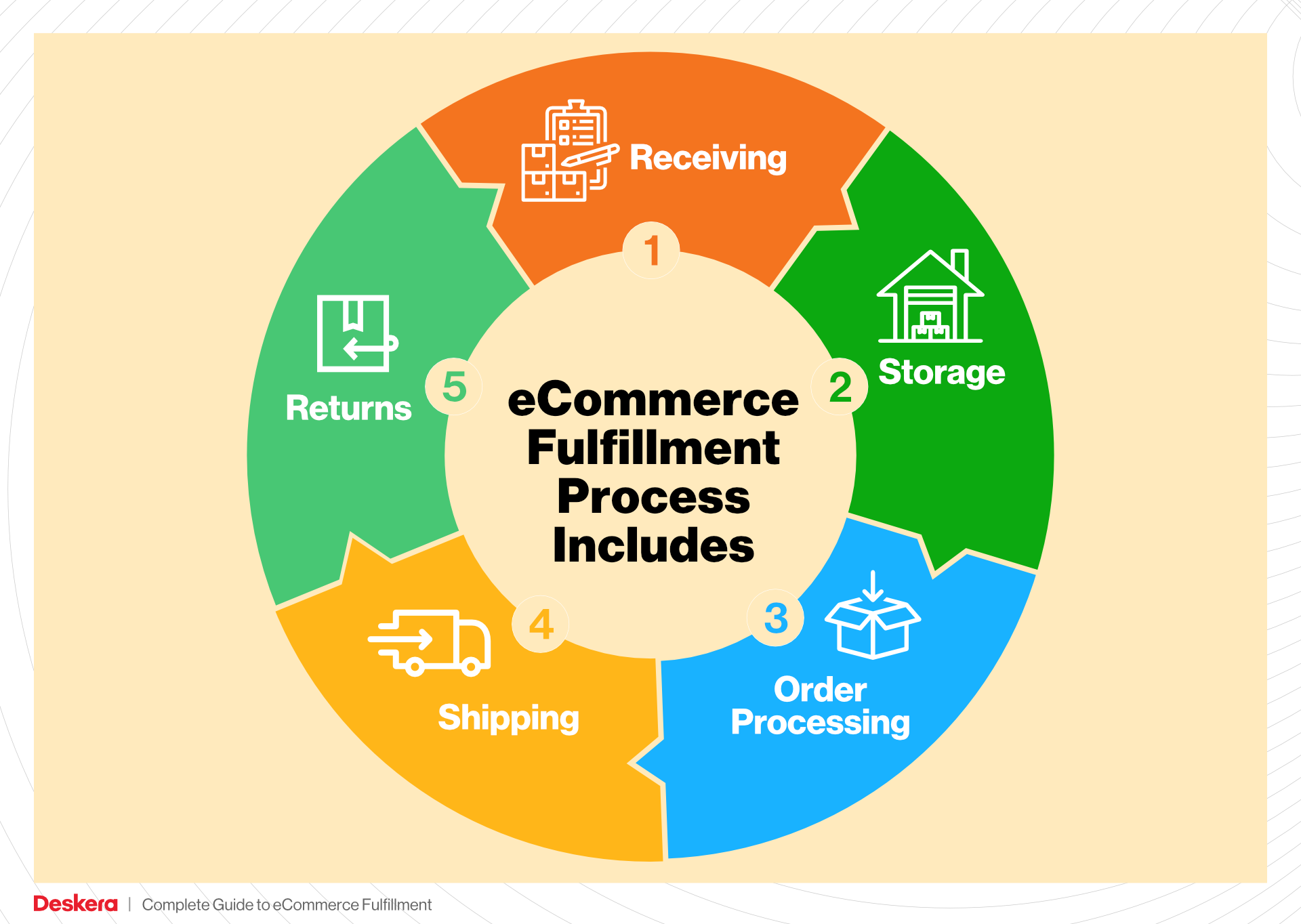
What You’ll Learn In This Guide
- What is E-commerce Fulfillment? An Introduction for Growing Businesses
- The Order Fulfillment Process: From ‘Buy’ Button to Customer’s Door
- Comparing Fulfillment Models: In-House vs. 3PL vs. Dropshipping
- A Deep Dive into Amazon FBA: Pros, Cons, and Who It’s For
- Core Services Offered by Fulfillment Centers
- How to Choose a Fulfillment Partner: A 6-Point Checklist
- Understanding Fulfillment Pricing: A Breakdown of Common Fees
- Frequently Asked Questions (FAQs) about Fulfillment
- Conclusion: Is Outsourcing Fulfillment the Right Move for Your Business?
- Important Disclaimer
The Order Fulfillment Process: From ‘Buy’ Button to Customer’s Door
1. Receiving Inventory
The order fulfillment process begins with receiving inventory, which is critical for maintaining a smooth operation. When products arrive at your fulfillment center, they need to be checked against the purchase order to ensure accuracy. This step involves verifying quantities, inspecting for damages, and recording items into your inventory management system.
Importance: Efficient inventory receiving minimizes errors and ensures that the stock levels are accurately reflected in your system. A well-managed receiving process helps prevent stockouts or overstock situations, both of which can adversely affect your sales and customer satisfaction.
Key Term: SKU (Stock Keeping Unit) – A unique identifier for each product that helps streamline inventory tracking and management.
2. Warehouse Storage
Once inventory is received and verified, the next step is warehouse storage. Products are organized in a manner that maximizes space and facilitates easy access. This may involve categorizing items by type, size, or sales velocity, and utilizing shelving, bins, or pallets.
Importance: Proper warehouse storage is essential for optimizing picking efficiency and reducing the time it takes to fulfill orders. An organized warehouse layout not only improves workflow but also enhances safety and minimizes the risk of inventory damage.
Key Term: FIFO (First In, First Out) – An inventory management method that ensures older stock is sold or used before newer stock, helping to reduce spoilage and obsolescence, particularly in industries with perishable goods.
3. Order Picking
When a customer places an order, the next step is order picking, where items are selected from the warehouse to fulfill the order. This process can vary in complexity depending on the type of items and the volume of orders. Efficient picking methods include single order picking, batch picking, or zone picking.
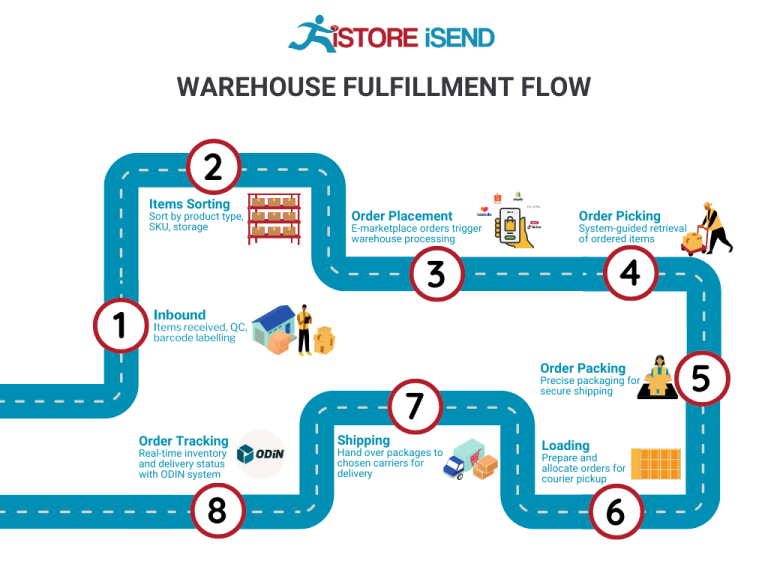
Importance: Accurate and efficient order picking is vital for maintaining a high level of customer satisfaction. The speed at which orders are picked directly affects the turnaround time for shipping, which is a critical factor in the e-commerce landscape where customers expect fast delivery.
Key Term: Pick Lists – Documents generated to guide warehouse staff in selecting the correct items for an order. These lists streamline the picking process and help ensure accuracy.
4. Order Packing
After items are picked, they are moved to the packing station for order packing. This step involves carefully packaging the items to prevent damage during transit and often includes adding branded elements like packing slips, promotional materials, or custom labels.
Importance: Order packing is a crucial touchpoint in the customer experience. A well-packed order not only ensures that products arrive in perfect condition but also enhances the unboxing experience, which can lead to repeat business and positive reviews.
Key Term: Kitting – The process of assembling multiple items into a single package or kit, often used in promotional offers or subscription boxes, which can enhance perceived value and convenience for customers.
5. Shipping & Delivery
The final step in the order fulfillment process is shipping and delivery. Once orders are packed, they are labeled and handed over to shipping carriers for delivery to the customer. This involves selecting the best shipping method based on factors like cost, delivery speed, and destination.

Importance: Efficient shipping and delivery are paramount in the e-commerce industry. The chosen shipping method can significantly impact customer satisfaction; customers expect timely and reliable delivery. Monitoring shipping performance and managing carrier relationships can lead to better rates and improved service levels.
Key Term: Tracking Number – A unique identifier assigned to a package that allows both the business and the customer to monitor the shipment’s progress in real-time, providing transparency and reducing customer inquiries about order status.
In summary, understanding and optimizing each step of the order fulfillment process—from receiving inventory to shipping and delivery—is essential for e-commerce businesses looking to scale. Implementing best practices in each area not only enhances operational efficiency but also elevates the overall customer experience, ultimately driving growth and loyalty.
Comparing Fulfillment Models: In-House vs. 3PL vs. Dropshipping
Fulfillment Models Comparison
| Model | Who Handles Inventory | Best For (Business Stage) | Key Advantage | Key Disadvantage |
|---|---|---|---|---|
| In-House Fulfillment | Business itself | Established businesses | Complete control over operations | High overhead and fixed costs |
| Third-Party Logistics (3PL) | 3PL provider | Startups and growing firms | Scalability and lower operational burden | Less control over fulfillment process |
| Dropshipping | Supplier | New entrepreneurs and small businesses | Low startup costs and inventory risk | Lower profit margins and reliance on suppliers |
In-House Fulfillment
In-house fulfillment involves managing all aspects of the logistics process within the business itself. This includes handling inventory, picking and packing orders, shipping, and managing returns. Businesses that opt for this model typically have an established operational framework and sufficient resources to maintain their own warehouse space and staff.
The primary advantage of in-house fulfillment is the level of control it offers. Businesses can tailor their processes to fit their specific needs, ensuring that they can maintain quality standards and enhance customer experience. Additionally, they can quickly adapt to changes in demand or adjust their operations without needing to coordinate with an external partner. However, this model also comes with significant disadvantages. The fixed costs associated with warehousing, staffing, and technology can be high, which may strain cash flow, especially for startups. Moreover, as order volumes increase, scaling operations can become complex and cumbersome, potentially leading to inefficiencies.
Third-Party Logistics (3PL)
Third-party logistics (3PL) providers offer a comprehensive solution for businesses looking to outsource their fulfillment operations. With a 3PL, the logistics provider handles inventory storage, order processing, shipping, and even returns management on behalf of the business. This model is particularly beneficial for startups and growing firms that may not have the resources to manage fulfillment in-house.
One of the key advantages of partnering with a 3PL is scalability. As businesses grow, they can easily adjust their fulfillment needs without the overhead costs associated with maintaining their own warehouse. Additionally, 3PLs often have established relationships with shipping carriers, allowing for reduced shipping costs and improved delivery times. However, businesses must also consider the trade-off of reduced control over the fulfillment process. Relying on a third party means that businesses may have less visibility into inventory management and shipping practices, which can sometimes lead to issues with order accuracy or customer service. That said, many reputable 3PLs offer advanced technology integrations and real-time tracking, helping to mitigate these concerns.
Dropshipping
Dropshipping is a fulfillment model where the retailer does not hold inventory but instead transfers customer orders directly to a supplier, who then ships the products to the customer. This model is particularly appealing for new entrepreneurs and small businesses looking to minimize risk and reduce upfront costs.
The primary advantage of dropshipping is that it requires minimal investment in inventory and storage space, allowing entrepreneurs to start their business with very little capital. This can be particularly beneficial for testing new products or entering niche markets without significant financial commitment. However, dropshipping also has notable disadvantages. Profit margins can be lower, as retailers often have to sell products at a premium to cover supplier costs. Furthermore, reliance on suppliers for inventory management and shipping can lead to challenges such as stockouts, delayed shipments, and inconsistent product quality. These factors can ultimately impact customer satisfaction and brand reputation, making it essential for dropshippers to carefully vet their suppliers and maintain clear communication.
Conclusion
When choosing a fulfillment model, e-commerce business owners must consider their specific needs, growth potential, and resource availability. In-house fulfillment provides control but requires significant investment, while third-party logistics offer scalability and efficiency without the overhead. Dropshipping presents an accessible entry point for new entrepreneurs but comes with its own set of challenges. Each model has its pros and cons, and the right choice will depend on the individual business’s goals and operational capabilities.
A Deep Dive into Amazon FBA: Pros, Cons, and Who It’s For
Understanding Fulfillment by Amazon (FBA)
Fulfillment by Amazon (FBA) is a service offered by Amazon that allows sellers to store their products in Amazon’s fulfillment centers. Amazon then takes care of storage, packaging, shipping, and customer service on behalf of the sellers. This service is particularly attractive for e-commerce businesses looking to leverage Amazon’s extensive logistics network and customer base.
When a customer orders a product, Amazon handles the entire fulfillment process, including picking, packing, and shipping the item. This allows sellers to focus on other aspects of their business, such as marketing and product development. Additionally, products fulfilled by Amazon become eligible for Amazon Prime, which can significantly increase visibility and sales.
How FBA Works
-
Product Setup: Sellers create an Amazon seller account and list their products. They can either create new listings or add their products to existing ones.
-
Shipping Inventory: Sellers ship their products in bulk to Amazon’s fulfillment centers. Amazon provides guidelines on how to package and label items to ensure they are ready for storage and shipment.
-
Storage: Once the inventory arrives at Amazon, it is stored in their fulfillment centers. Amazon manages the inventory levels and updates the sellers on stock status.
-
Order Fulfillment: When a customer places an order, Amazon’s system automatically picks, packs, and ships the product to the customer. The seller is notified of the sale and the shipping details.
-
Customer Service: Amazon handles customer inquiries, returns, and refunds for FBA orders, allowing sellers to focus on growing their business.
-
Payment: After the sale, Amazon deducts its fees and transfers the remaining balance to the seller’s account.
Pros of FBA
1. Prime Eligibility
Products fulfilled by Amazon are automatically eligible for Amazon Prime, which attracts millions of loyal Prime members who prefer fast and free shipping. This can lead to increased sales and higher conversion rates.
2. Customer Trust
Amazon has a well-established reputation for reliability and customer service. When customers see “Fulfilled by Amazon,” they often feel more secure in their purchase, knowing that returns and customer service are handled by Amazon.
3. Multi-Channel Fulfillment
FBA isn’t limited to sales on Amazon. Sellers can also use FBA to fulfill orders from their own websites and other platforms. This multi-channel fulfillment capability allows businesses to streamline their logistics under one service.
4. Scalability
FBA allows businesses to scale quickly without needing to invest heavily in warehousing and logistics. Sellers can focus on growth and expansion while Amazon handles the fulfillment process.
5. Access to Advanced Logistics
Sellers benefit from Amazon’s advanced logistics infrastructure, which includes sophisticated tracking and shipping technology. This can improve delivery times and overall customer satisfaction.
Cons of FBA
1. High Fees
FBA comes with a variety of fees, including storage fees for inventory stored in Amazon’s warehouses and fulfillment fees for each order shipped. These costs can add up, especially for small businesses or those with lower margins.
2. Strict Inventory Rules
Amazon has strict policies regarding inventory management. Sellers must adhere to guidelines on labeling, packaging, and shipping products. Non-compliance can lead to additional fees or even suspension of the seller account.
3. Commingling Risks
FBA uses a commingling system, meaning that the inventory from different sellers may be mixed together in Amazon’s warehouses. This can pose risks if another seller’s inventory is damaged or defective, as it may affect your product’s reputation and customer satisfaction.
4. Limited Control Over Shipping
While Amazon handles shipping, sellers have limited control over the shipping process and timing. This can lead to delays or issues that are out of the seller’s hands, potentially impacting customer satisfaction.
5. Dependency on Amazon
Relying heavily on FBA means that sellers are dependent on Amazon’s policies and performance. Any changes in Amazon’s rules, fee structures, or fulfillment processes can directly affect a seller’s business.
Who is FBA Best For?
Fulfillment by Amazon is particularly well-suited for:
-
Startups and Small Businesses: New businesses looking to scale quickly without the overhead of managing their own fulfillment centers can benefit from FBA’s logistics capabilities.
-
Sellers with High Sales Volume: Businesses that have a steady flow of orders can take advantage of the efficiency and cost-effectiveness of FBA.
-
E-commerce Brands Seeking Brand Trust: Brands that want to leverage Amazon’s reputation to gain customer trust and drive sales can benefit significantly from FBA.
-
Multi-Channel Sellers: Businesses that sell on multiple platforms and want a streamlined fulfillment solution will find FBA’s multi-channel capabilities advantageous.
-
Sellers with Limited Resources: Companies lacking the manpower or logistics infrastructure to manage their own fulfillment will find FBA’s service invaluable.
In conclusion, Fulfillment by Amazon offers a powerful solution for e-commerce businesses aiming to scale efficiently. While there are significant advantages to using FBA, including access to Amazon’s vast customer base and logistics network, sellers must also consider the associated costs and limitations. Understanding these factors is crucial for making informed decisions about whether FBA is the right fit for your business.
Core Services Offered by Fulfillment Centers
Inventory Management & Warehousing
Effective inventory management and warehousing are foundational services provided by fulfillment centers that significantly impact an e-commerce business’s operational efficiency. This service entails the systematic handling of inventory, which includes receiving, storing, and tracking stock levels in a secure environment. Fulfillment centers utilize advanced inventory management software that integrates seamlessly with various e-commerce platforms, allowing businesses to monitor their stock in real time.
The primary benefit of robust inventory management is the ability to reduce excess inventory and avoid stockouts, both of which can lead to lost sales. By maintaining optimal inventory levels, businesses can respond quickly to market demand, ensuring that popular products are always available for customers. Additionally, fulfillment centers often provide flexible storage options without long-term contracts, which is particularly advantageous for startups and growing companies that may face fluctuating storage needs.
Pick and Pack Services
Pick and pack services are critical for ensuring that e-commerce orders are fulfilled accurately and efficiently. This process involves selecting (or “picking”) the correct items from the warehouse and packing them securely for shipment. Fulfillment centers typically employ trained staff and utilize technology to streamline this process, which includes barcode scanning to enhance accuracy and speed.
The benefits of efficient pick and pack services are manifold. First, they contribute to a higher order accuracy rate, which is essential for maintaining customer satisfaction and loyalty. A streamlined pick and pack operation reduces the time it takes to fulfill orders, enabling faster shipping and improving the overall customer experience. For e-commerce businesses, this means happier customers and potentially increased repeat purchases, which are vital for long-term growth.
Kitting and Assembly
Kitting and assembly services offered by fulfillment centers allow businesses to combine multiple products into a single package or kit, often to create a more compelling offering for customers. This service can involve assembling products, adding promotional materials, or creating gift sets that enhance the value proposition. Fulfillment centers can handle everything from simple product bundling to more complex assembly processes.
The key benefit of kitting and assembly is that it enables businesses to offer unique product combinations that can stand out in a crowded market. This can enhance customer satisfaction by providing convenience and perceived value. Furthermore, by outsourcing this process to a fulfillment center, e-commerce businesses can save time and resources, allowing them to focus on marketing and sales strategies rather than operational logistics.
Returns Management (Reverse Logistics)
Returns management, often referred to as reverse logistics, is an essential service that addresses the inevitable reality of e-commerce: product returns. Fulfillment centers provide a systematic approach to handling returns, which includes receiving returned items, inspecting them, and restocking them as necessary. This service also involves managing the paperwork and customer communication associated with returns.
The benefits of efficient returns management are critical for maintaining customer trust and satisfaction. A smooth returns process can turn a potentially negative experience into a positive one, encouraging customers to shop with confidence. Moreover, effective returns management helps businesses keep their inventory up to date and reduces the financial impact of returns. By partnering with a fulfillment center that specializes in returns management, e-commerce businesses can streamline their operations and enhance their overall customer service.
Conclusion
In conclusion, the core services provided by fulfillment centers—inventory management and warehousing, pick and pack services, kitting and assembly, and returns management—are integral to the success of e-commerce businesses. By leveraging these services, entrepreneurs and operations managers can enhance their operational efficiency, improve customer satisfaction, and ultimately scale their businesses more effectively. In a competitive e-commerce landscape, choosing the right fulfillment partner can make all the difference in achieving sustainable growth and profitability.
How to Choose a Fulfillment Partner: A 6-Point Checklist
Location & Warehouse Network
When selecting a fulfillment partner, the location of their warehouses is paramount. A strategically located fulfillment center can drastically reduce shipping times and costs, enhancing your customer experience.
Why It’s Important:
– Proximity to Customers: Being closer to your customer base can lead to faster delivery times, which is a critical factor in customer satisfaction.
– Shipping Costs: Warehouses located near major transportation hubs can reduce shipping costs significantly.
Questions to Ask:
1. Where are your warehouses located, and how do those locations align with my target market?
2. What is your average shipping time to key regions?
3. Do you have multiple warehouses, and how does that benefit my distribution strategy?
Technology & Integrations
The technology that your fulfillment partner employs can make or break your operational efficiency. A robust fulfillment system with seamless integrations can streamline your order management and inventory control processes.
Why It’s Important:
– Real-Time Tracking: An advanced technology platform allows for real-time tracking of inventory and orders, which is essential for maintaining transparency with your customers.
– E-commerce Integration: Compatibility with your existing e-commerce platforms can reduce manual work and errors.
Questions to Ask:
1. What technology do you use for order fulfillment and inventory management?
2. Can your system integrate with my e-commerce platform, and if so, how many platforms do you currently support?
3. How do you handle data security and backup?
Specializations (e.g., Cold Storage, Oversized Items)
Different businesses have unique fulfillment needs based on their product types. If your products require specific handling, such as cold storage or special packing for oversized items, ensure that your fulfillment partner can accommodate these requirements.
Why It’s Important:
– Product Integrity: Proper handling ensures that your products arrive in perfect condition, maintaining your brand reputation.
– Regulatory Compliance: Certain products may require adherence to regulations that only specialized fulfillment partners can meet.
Questions to Ask:
1. What specializations do you offer in terms of product handling?
2. Are your facilities equipped for temperature-sensitive items or oversized products?
3. Can you provide examples of how you’ve successfully fulfilled orders with similar requirements in the past?
Scalability & Capacity
As your business grows, your fulfillment needs will likely evolve. A good fulfillment partner should not only meet your current requirements but also be able to scale with you.
Why It’s Important:
– Growth Support: A partner that can scale up operations quickly can prevent bottlenecks during peak seasons or unexpected growth periods.
– Flexibility: A flexible partner can adjust their services to meet your changing demands without significant disruptions.
Questions to Ask:
1. How do you handle increased order volumes, especially during peak seasons?
2. What is your capacity for scaling operations, and how quickly can you adapt to my growth?
3. Do you have a plan in place for managing inventory overflow or storage during busy periods?
Pricing and Contracts
Understanding the pricing structure and contract terms of a fulfillment partner is crucial for budgeting and financial planning. Transparent pricing helps avoid unexpected costs that could impact your bottom line.
Why It’s Important:
– Budget Management: Knowing your costs upfront allows for better financial forecasting and planning.
– Flexibility in Contracts: Long-term contracts can be a burden for startups; look for partners who offer flexibility.
Questions to Ask:
1. What is your pricing structure (e.g., per order, storage fees, additional services)?
2. Are there any hidden fees or additional costs I should be aware of?
3. What are the terms of the contract, and is there flexibility for early termination or adjustment?
Customer Support & Reviews
The level of customer support provided by a fulfillment partner can significantly affect your operations. Responsive and knowledgeable support can help address issues quickly, minimizing disruptions.
Why It’s Important:
– Operational Efficiency: Strong customer support can resolve problems before they escalate, ensuring a smoother operation.
– Feedback and Improvement: Partners that listen to feedback can adapt and improve their services to better meet your needs.
Questions to Ask:
1. What kind of customer support do you offer (e.g., dedicated account manager, 24/7 support)?
2. How do you handle issues that arise during the fulfillment process?
3. Can you provide references or case studies from current or past clients?
Conclusion
Choosing the right fulfillment partner is a critical decision that can influence your business’s operational efficiency and customer satisfaction. By using this checklist, you can ensure that you thoroughly evaluate potential partners based on essential criteria that align with your business needs. Taking the time to ask the right questions and understand their capabilities will help you forge a partnership that supports your growth and success in the e-commerce landscape.
Understanding Fulfillment Pricing: A Breakdown of Common Fees
Initial Setup Fees
Initial setup fees are one-time charges that cover the costs associated with onboarding your business onto a fulfillment provider’s platform. This may include the integration of your e-commerce platform with the fulfillment service’s system, data migration, and initial inventory setup. The fee can vary significantly based on the complexity of the integration, the number of products you offer, and the level of customization required.
To minimize initial setup costs, it’s beneficial to choose a fulfillment provider that offers free or low-cost onboarding. Some providers may waive these fees entirely, particularly for startups or small businesses looking to scale. Always inquire about what is included in the setup fee and whether there are ongoing support services that come with it.
Receiving Fees
Receiving fees are charged when your inventory arrives at the fulfillment center. These fees cover the labor and resources required to unload, inspect, and put away your products in the warehouse. The fee is typically calculated per pallet or per item received.
To keep these costs manageable, consider sending larger, consolidated shipments rather than frequent, smaller ones. This approach not only reduces the per-unit receiving cost but also helps maintain better inventory levels. It’s also wise to discuss with your fulfillment partner how they handle damaged or incorrect shipments, as this can impact your overall receiving fees.
Storage Fees (per pallet/bin)
Storage fees are recurring charges for keeping your inventory in the fulfillment center. These fees can be calculated based on the volume of space your products occupy, typically measured in pallets or bins. Storage fees can vary depending on whether the storage is short-term or long-term, with long-term storage often incurring higher rates.
To optimize storage costs, maintain an efficient inventory turnover rate. Regularly review your inventory levels and adjust your stock accordingly to avoid overstocking. Additionally, some fulfillment centers offer free or reduced storage fees for the first few months, which can be advantageous for startups.
Pick & Pack Fees (per item/order)
Pick and pack fees are charged for the labor involved in selecting items from your inventory and packing them for shipment. This fee is usually calculated per item or per order, depending on the fulfillment provider’s pricing structure. The complexity of the order can also influence the fee; for instance, orders with multiple items may incur higher charges than single-item orders.
To reduce pick and pack fees, consider streamlining your product offerings and optimizing your order fulfillment process. Offering fewer product variations can simplify picking, thus lowering costs. Additionally, some fulfillment services provide tiered pricing, where the per-order fee decreases as your order volume increases.
Shipping Fees
Shipping fees cover the cost of transporting your products from the fulfillment center to your customers. These fees can be influenced by several factors, including the shipping method (standard, expedited, etc.), package weight and dimensions, destination, and the carriers used. Shipping fees are often passed on directly to the customer, but it’s essential to understand how they are calculated to ensure you’re pricing your products competitively.
To manage shipping costs effectively, consider negotiating rates with your fulfillment provider or selecting a partner with established relationships with carriers. Some fulfillment services offer discounted shipping rates due to their volume, which can lead to significant savings. Also, evaluate your shipping strategy; offering free shipping over a certain order value can encourage larger purchases and help offset shipping costs.
Tips for Getting an Accurate Quote
-
Be Transparent: Provide potential fulfillment partners with detailed information about your products, order volume, and specific needs. This transparency will help them give you a more accurate quote.
-
Ask for Itemized Quotes: Request itemized quotes that break down all potential fees, including setup, receiving, storage, pick and pack, and shipping. This clarity will help you compare providers more effectively.
-
Consider Future Growth: Think about your projected growth when assessing quotes. Ask how fees may change as your business scales and what volume discounts might be available.
-
Clarify Terms: Ensure you understand the terms associated with each fee. Inquire about any potential additional charges, such as for returns or special handling, to avoid surprises later.
-
Negotiate: Don’t hesitate to negotiate terms and pricing with your fulfillment provider, especially if you are considering a long-term partnership or have significant order volumes.
By understanding these common fulfillment pricing models and strategically managing your logistics, you can optimize your e-commerce operations and set the stage for scalable growth.
Frequently Asked Questions (FAQs) about Fulfillment
1. What is a fulfillment service?
A fulfillment service is a third-party logistics (3PL) provider that manages the storage, packaging, and shipping of products for e-commerce businesses. These services help streamline the order fulfillment process, allowing businesses to focus on sales and customer engagement while leaving logistics to the experts.
2. What is a 3PL?
A third-party logistics (3PL) provider offers outsourced logistics services to businesses. These services can include warehousing, inventory management, order fulfillment, shipping, and returns processing. Utilizing a 3PL allows businesses to scale efficiently without the need for significant investments in infrastructure.
3. What’s the difference between a warehouse and a fulfillment center?
While both warehouses and fulfillment centers store products, they serve different purposes. A warehouse primarily focuses on inventory storage and may not handle order processing. In contrast, a fulfillment center is equipped to pick, pack, and ship orders directly to customers, often providing additional services like inventory management and returns processing.
4. How much do fulfillment services cost?
The cost of fulfillment services can vary widely based on factors such as the volume of orders, the type of products, storage requirements, and specific services needed (like kitting or international shipping). Typically, costs are structured around storage fees, pick-and-pack fees, and shipping costs. It’s essential to request quotes from multiple providers to compare pricing based on your specific needs.
5. How can I choose the right fulfillment service for my startup?
To choose the right fulfillment service, consider factors such as the provider’s experience with your type of products, scalability options, technology integration capabilities, customer support, and pricing structure. Look for a provider that offers flexibility, as your needs may evolve as your business grows.
6. What are the benefits of using a fulfillment service for startups?
Utilizing a fulfillment service can offer several advantages for startups, including reduced overhead costs, access to advanced logistics technology, faster shipping times, and the ability to focus on core business activities like marketing and product development. It also allows startups to scale operations without the burden of managing logistics in-house.
7. How does inventory management work with fulfillment services?
Most fulfillment services provide real-time inventory management systems that integrate with your e-commerce platform. This allows you to monitor stock levels, receive alerts for low inventory, and forecast future needs. Effective inventory management helps prevent stockouts and overstock situations, ensuring smooth operations.
8. Can fulfillment services handle returns?
Yes, many fulfillment services offer comprehensive returns management solutions. They handle the entire returns process, including receiving returned items, inspecting them, restocking inventory, and updating your inventory management system. This service helps maintain customer satisfaction by simplifying the returns experience.
9. What shipping options do fulfillment services provide?
Fulfillment services typically partner with various carriers (such as USPS, UPS, and FedEx) to offer a range of shipping options, including standard, expedited, and international shipping. They also help you navigate shipping regulations and costs, ensuring your products reach customers efficiently and cost-effectively.
10. How can fulfillment services help improve customer satisfaction?
Fulfillment services can significantly enhance customer satisfaction by ensuring timely and accurate order processing, offering various shipping options, and providing a seamless returns process. Many fulfillment providers also focus on creating memorable unboxing experiences, which can reinforce brand loyalty and encourage repeat purchases.
Conclusion: Is Outsourcing Fulfillment the Right Move for Your Business?
Evaluating the Benefits of Outsourcing Fulfillment
Outsourcing fulfillment can be a transformative decision for e-commerce businesses looking to scale. By leveraging a third-party logistics (3PL) provider, you can significantly save time and resources. This allows you to focus on core business activities such as marketing and product development, rather than getting bogged down in logistics. A reliable fulfillment partner can handle everything from warehousing and inventory management to shipping and returns, streamlining your operations and freeing you up to concentrate on growth.
Scalability is another critical advantage. As your business expands, so do your fulfillment needs. A good 3PL service can adapt to fluctuations in order volume, whether you’re experiencing peak seasons or launching new products. This flexibility is essential for maintaining customer satisfaction without the stress of managing additional logistics in-house.
Furthermore, partnering with a fulfillment expert brings invaluable industry knowledge to your operation. These providers often have established relationships with shipping carriers, enabling you to benefit from lower shipping costs and faster delivery times. Their expertise in inventory management and order processing can also minimize errors, ensuring a seamless experience for your customers.
However, not all fulfillment partners are created equal. It’s crucial to choose a provider that aligns with your business goals and offers the support you need to thrive. Take the time to research potential partners, looking for those with a proven track record of success and exceptional customer service.
Take Action Today
To determine whether outsourcing fulfillment is the right move for your business, conduct a thorough audit of your current shipping process. Evaluate your time spent on logistics versus your growth potential. Consider how a dedicated fulfillment partner could enhance your operations and contribute to your long-term success. By making informed decisions now, you can set the stage for sustainable growth in the future.
Important Disclaimer
⚠️ Important Disclaimer
The information in this guide is for educational purposes. Fulfillment services, pricing, and platform features change frequently. Always conduct your own due diligence and consult with providers directly before making business decisions.
